A Delicious, Highly Spiced Traditional Variant of Korean Kimbap
On a misty afternoon at Jinju’s Jungang Market, a chili-scented steam rises from a modest bunsik. It wafts down the alley, attracting passersby. Customers wipe their foggy glasses, don plastic gloves, and queue for a seemingly ordinary seaweed roll, accompanied by a warning known throughout the city: “맛있게 맵다”, deliciously spicy.
One bite, and the soft rice releases; the power of Cheongyang peppers immediately rises to the sinuses, before a savory base of caramelized soy soothes the fire. Pain and comfort coexist in the same seaweed sheet, a duality that has elevated gochu kimbap from a simple market snack to a national “culinary challenge”.
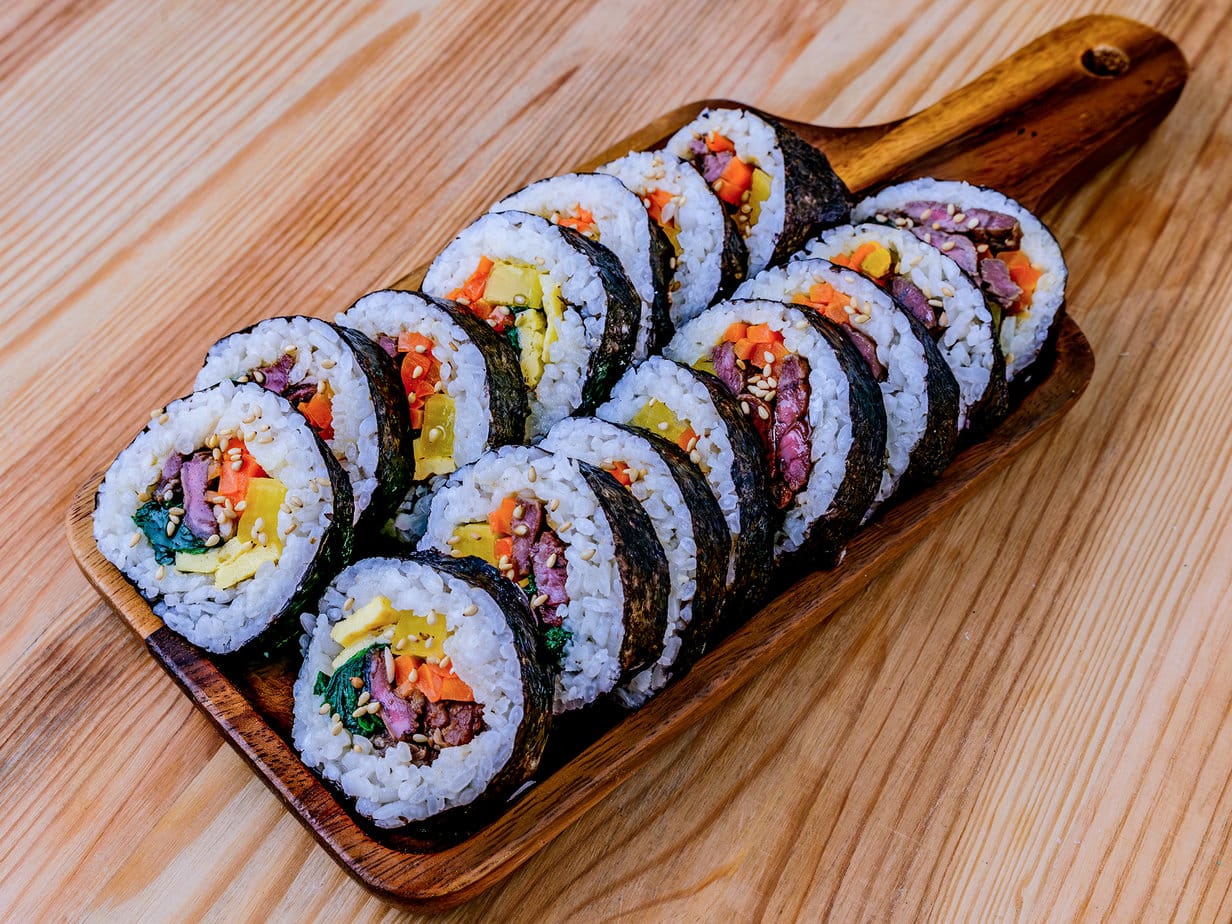
Jinju Roots
The legend begins in the early 1990s, when a vendor at Jungang Market chops a mountain of fresh green chilies and incorporates them into her kimbap rice to attract customers at dawn. The news spreads quickly, and by the end of the decade, the roll has become a city icon, affectionately nicknamed “Yeopgi Tteokbokki” of kimbap for its cult bite, capable of inducing sweat.
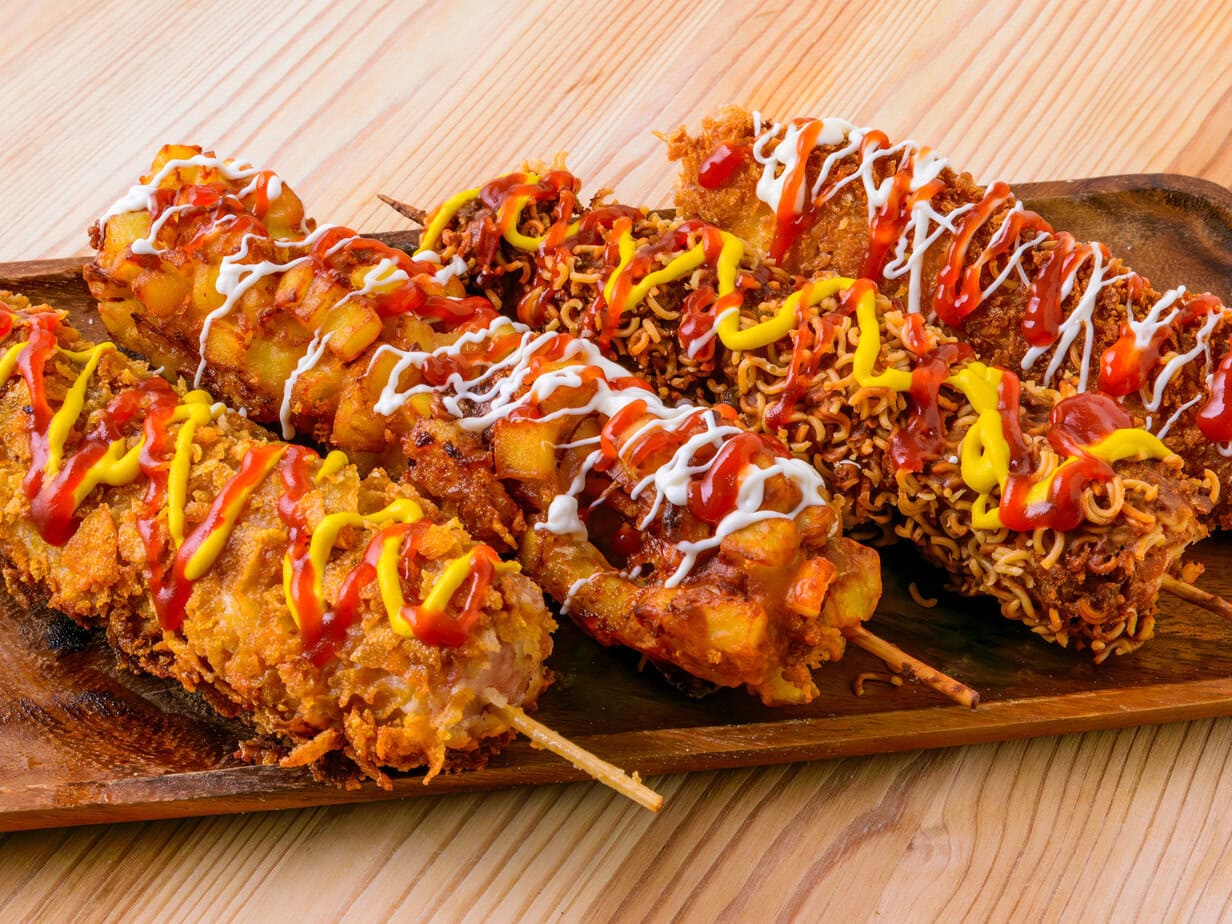
Today, the “stall has transformed into a small local franchise with several outlets in the province, each boasting a patented house sauce and a generous portion of chopped chilies per roll (some sources mention up to 10 to 20 peppers for the spiciest versions). But locals swear that only a pilgrimage to the original counter, tucked away in a narrow market stand, allows you to taste Jinju’s pride in all its intensity.”
At the Heart of a Traditional Roll: Ingredients Flavor Logic

Once the exaggeration is set aside, the list of ingredients borders on minimalism: rice, nori seaweed, Cheongyang peppers, carrot, and strips of eomuk (Korean fish cake). No crunch of danmuji, no ham saltiness, no egg to soften the spiciness.
Instead, a soy-garlic glaze permeates each grain, providing an umami ballast; a final drizzle of toasted sesame oil releases a nutty aroma. Crucially: everything is finely chopped, confetti-style, ensuring an even distribution and a consistent, lingering spiciness that many Koreans describe as “매운데 계속 손이 가는 맛” (spicy but irresistible).
No official nutritional values are provided, but the roll is generally considered a snack rather than a diet dish, with the endorphin rush making any portion control rather theoretical.
In short, my recipe includes:
- Light Soy Sauce: A light, salty sauce essential in Asian cuisine, used here to salt and enhance the flavors of the stir-fried rice.
- Oyster Sauce: A thick, slightly sweet sauce made from oysters, it adds umami depth to the dish.
- Garlic: Used in paste form, it provides a powerful and typical aromatic base for stir-fried dishes.
- Oligodang Syrup (or corn syrup/honey): Used to balance the salt and chili with a touch of sweetness.
- Shaoxing Wine: Chinese cooking wine adding complex notes and a slight fermented taste to the sauce.
- Sesame Oil: Used as a finishing touch, it gives a toasted and warm flavor to the rice.
- Sesame Seeds: Sprinkled at the end, they add crunch and a nutty aroma.
- Nori: Dried seaweed used to wrap the stir-fried rice kimbap-style, it adds an iodine touch.
- Sushi Rice: Round and sticky rice, ideal for shaping and rolling in seaweed, used here as the base of the dish.
Modern Variants versus Purist Tradition
Some shops now offer to adjust the spice level, reducing the amount of chili for sensitive palates or increasing it for extreme spice lovers, and sometimes offer tuna-mayonnaise or mozzarella toppings that provide a comforting layer over the spiciness.
Purists are amused by this, citing Okbong Maeun Kimbap, where the strictness of “chili only” still rules; the recipe includes neither ham, cheese, nor other softening fillings.
Elsewhere, the myulchu kimbap combines dried anchovies, chili peppers, and a gochujang base, which adds a sweet-hot warmth.
The most radical variant stuffs whole chili peppers with rice before wrapping them in seaweed: more of a jalapeño popper than kimbap, critics argue, as the founding gesture of the Jinju style is to mix, not to stuff.
How to Serve it?
A standard platter arrives pre-sliced, its edges glistening with sesame oil and sprinkled with toasted seeds. Yellow pickled radish is usually served on the side for crunch, along with a small paper cup of fish cake broth: a gentle pause between bites.
Many diners also dip each piece in a touch of kewpie mayonnaise, a creamy extinguisher that brings out the soy-garlic notes of the roll. Among other soothing strategies often recommended by regulars: a few sips of cold water, a light soda, or even a splash of milk. True enthusiasts, however, claim that the lingering burn is half the pleasure.

Authentic Gochu Kimbap
Equipment
- bamboo mat
Ingredients
- 150 g of Korean fish cakes eomuk or fish cakes
- 8 fresh Cheongyang peppers or regular red peppers
- 1 carrot medium size, sliced very very thinly
- 140 g of sushi rice (dry weight), cooked in advance
- 1 tablespoon light soy sauce
- 1 tablespoon of oyster sauce
- 0.5 tablespoon garlic crushed into a paste
- 0.5 tablespoon of oligodang syrup substitute with corn syrup or honey if needed
- 0.5 tablespoon Shaoxing wine
- 1 tablespoon of toasted sesame oil
- 1 tablespoon of sesame seeds
- 2 nori sheets dried seaweed, also called gim
Instructions
Preparation
- Cut the fish cake into long strips, then chop finely.150 g of Korean fish cakes

- Finely slice the carrot.1 carrot
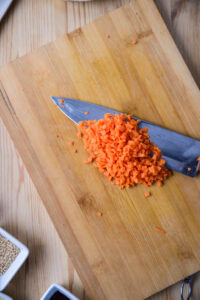
- Cut the red peppers in half and remove the seeds, then slice very finely.8 fresh Cheongyang peppers

- Prepare the sauce by mixing garlic, soy sauce, oyster sauce, oligodang syrup, and Shaoxing wine.1 tablespoon light soy sauce, 1 tablespoon of oyster sauce, 0.5 tablespoon garlic, 0.5 tablespoon of oligodang syrup, 0.5 tablespoon Shaoxing wine

- Pour enough cooking oil into a pan, sauté the carrots first.

- When the carrots are cooked, add the red peppers and eomuk, then sauté again.
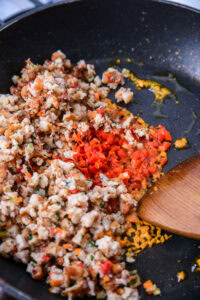
- Add the sauce, mix well, then sauté the rice.140 g of sushi rice

- Finish the fried rice by adding sesame oil and sesame seeds.1 tablespoon of toasted sesame oil, 1 tablespoon of sesame seeds
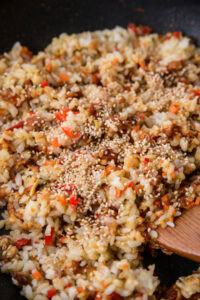
- Let the fried rice cool, then roll it in seaweed for kimbap.2 nori sheets
Notes
- If you want to feel more spiciness, add more peppers
- Wearing gloves is recommended when handling peppers to avoid irritation. Like, especially don’t go to the bathroom after, I speak from experience
Nutrition
Culinary sources
- Local testimonials on Instagram: Jinju, the birthplace of ddaengcho kimbap
- YouTube video reports confirming the Jinju origin
- Detailed Korean recipe: authentic ingredients and sauce
- Tistory blog: step-by-step guide for Cheongyang chili sauce
- Jinju franchise: highlighting the patented sauce and Cheongyang peppers
- Naver blog: absence of ham and danmuji, extreme spiciness
- Naver blog (another author): “addictive” aspect and crunchy texture
- Korean Bapsang: gimbap myulchu (anchovy-chili) as a modern evolution
- Aeri’s Kitchen: definition of ddaengcho kimbap
- Facebook: discussions on spice levels and accompanying sauces
- Triple Guide: tasting tips and dip suggestions
- Seonkyoung Longest: comparison with other Korean stuffed peppers
- Reddit: discussions on preparation differences

